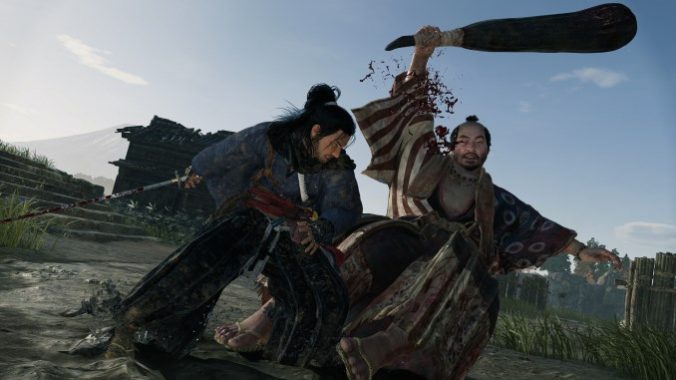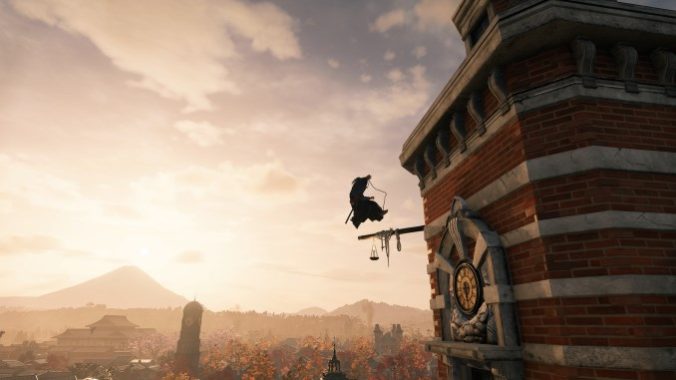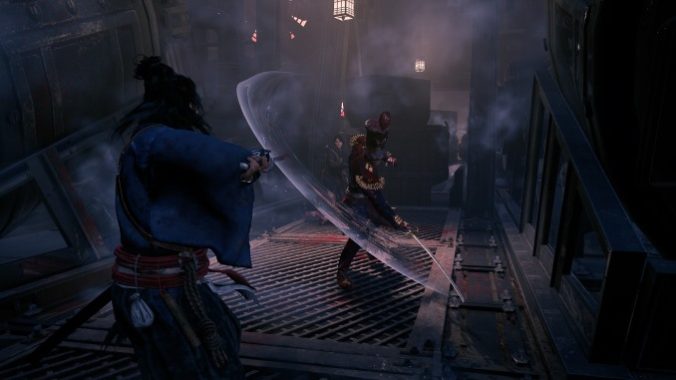Rise of the Ronin Is the Best Open World Game of 2013

Like the rising of the sun, like the waning of the moon, as sure as night follows day and death follows life: Team Ninja will release a stone cold classic 7/10 once every 12 to 18 months. It will have gripping, satisfying combat that pushes your reaction timing and rapid-fire strategizing to the test. It will have a loot system designed by The Devil. It will have a breadth of toolkits and approaches to encounters that put damn near every other action game to shame. It won’t have anywhere near enough enemy variety to use it all on. It will run like total shit. It will inexplicably go on for 70 hours. The Izuna Drop will never once get old. It is the best of times, it is the worst of times, it is pure and undistilled uncut gaming. Rise of the Ronin is in stores now.
But there’s a catch: Rise of the Ronin is not merely a new Team Ninja action game, it is an Open World Game, a Sony Published PS5 Exclusive Blockbuster, in a collaboration that is as revealing as it is baffling. The Sony Prestige RPG is a well established form, valuing seamless integration between its gameplay and narrative systems, combat that is graphically impressive but mechanically shallow enough to not scare a mass audience away, and a character driven story with a polished presentation. Rise of the Ronin is, it brings me great pleasure to say, none of these things. It is a god damn videogame in every way, and every step closer it takes towards the PlayStation cinematic ideal only serves to reveal how vast the canyon is.
A short prologue establishes your character, a Blade Twin of the Veiled Edge, raised from birth as an invisible anti-shogunate assassin, in pursuit of your other half against the backdrop of the rising tensions that will lead to the Boshin War. Afterwards, you arrive in the open world and immediately clear a village of bandits, and a tooltip explains that establishing Public Order will raise your Bond Level. Your Bond Level with who? Excuse me? Why am I establishing Public Order anyway, aren’t I an anti-shogunate assassin? What do these meters actually represent; who in-universe is giving me loot for raising my Shibuya Bond Level? Such questions shall go unanswered. This would not raise an eyebrow in Nioh, a menu driven game filled with initially confusing and overwhelming systems, but placed into juxtaposition with the cinematic prologue the sheer videogame of it all is overwhelming.
When you accept this and settle into its open world rhythms, you may hit upon a realization: Rise of the Ronin feels ancient. This is no bad thing. The world is pure Assassin’s Creed Brotherhood specifically, dense cities and surrounding farmland, jumping over rowhouse roofs to land assassinations from above. Even the glider, a modern Open World staple, is modeled directly off Arkham City and not Breath of the Wild. The world is well designed too, with a great sense of art design, its three cities fading into the foggy distance with beautiful skyboxes of Mt. Fuji. The districts each feel distinct, with enemy camps identified by billowing smokestacks and shrines hiding off the beaten path behind Torii gates, reducing the need for constantly opening the map like it’s a menu. But ultimately this is not a game of exploration and discovery; even as an intentional throwback this is still an open world of Content and Checklists, placing the burden on the combat to be excellent.
Which, of course, it is.

Rise of the Ronin’s combat is built clearly out of the bones of Nioh and Team Ninja’s other recent games, but it moves the camera down and to the right while restricting movement, creating a completely different feel that emphasizes the sword duels the game is going for. Battles revolve around timing parries around the enemy attacks, while managing your Ki and Blood meters to keep up the pressure without running out of stamina yourself and being left open for a counter. You only have a single combo string (though can vary between stances and weapons on the fly), placing the focus not on combo expression but on reading and reacting to your enemies attack patterns. This mostly works in the game’s favor and greatly reduces the game’s initial complexity, in one area of concession to a new audience that benefits the game greatly. The enemies are aggressive, and there are a metric ton of weapons and stances to learn—both to use and react to. Nailing a parry feels incredible and the timing is just tight enough where it is always challenging but never impossible. It’s a genuinely incredible achievement how the appeal of this team’s combat design has been refined into something so approachable, without losing its core appeal in the process. There is no one better in the business at making you press Square to Swing a Sword.
However, the game’s structure works somewhat against this and it does eventually start to drag, as optimal strategies over repeated enemy types assert themselves throughout the course of play. There is an incredibly wide variety of weapons and stances, with different stealth and sub-weapon options in the mix, but systems like the skill tree advancements and weapon proficiency encourage you to stick with what you know. To play efficiently is to ignore everything that makes the game interesting, with a disappointing prioritization of numbers-go-up progression systems over pressure points that encourage the experimentation that makes the game sing.
-

-

-

-

-

-

-

-

-

-

-

-

-

-

-

-

-

-

-

-

-

-

-

-

-

-

-

-

-

-

-

-

-

-

-

-

-

-

-

-









































